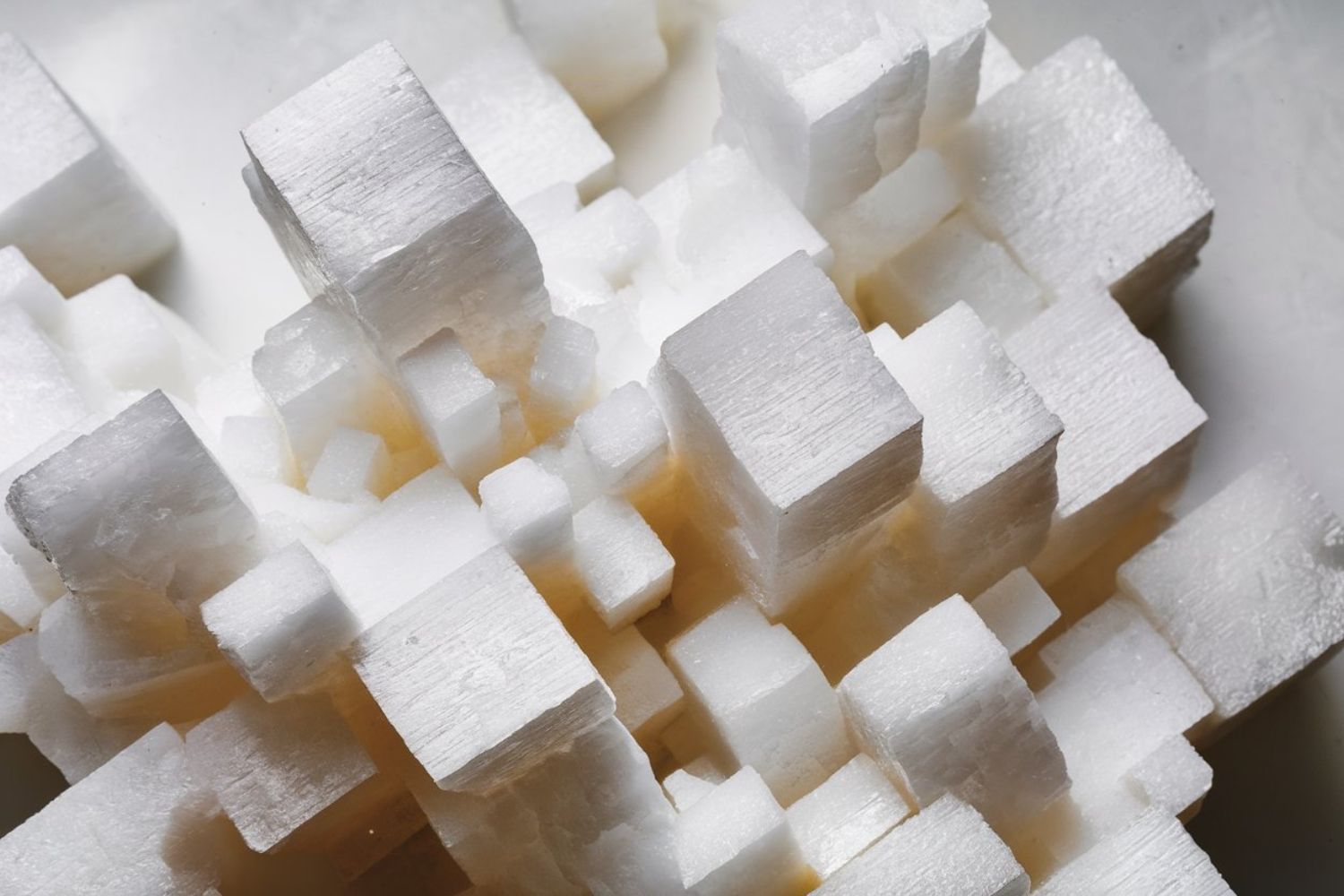
Ammonium hexafluoroaluminate might sound like a mouthful, but this compound plays a crucial role in various industries. What exactly is ammonium hexafluoroaluminate? It's a white crystalline substance often used in aluminum production, ceramics, and even in some chemical processes. This compound, also known as ammonium cryolite, has unique properties that make it valuable in these applications. For instance, it helps in the extraction of aluminum from its ores, making the process more efficient. Additionally, its use in ceramics enhances the durability and quality of the final products. Curious about more? Let's dive into 20 fascinating facts about this versatile compound!
Key Takeaways:
- Ammonium Hexafluoroaluminate, also known as ammonium cryolite, is a white crystalline compound used in aluminum production, ceramics, and glass manufacturing. It's important to handle it safely and be mindful of its environmental impact.
- When working with Ammonium Hexafluoroaluminate, remember to wear protective gear, store it properly, and be cautious of its decomposition and reactivity. Its history and unique properties make it a fascinating compound with diverse industrial applications.
What is Ammonium Hexafluoroaluminate?
Ammonium hexafluoroaluminate, also known as ammonium cryolite, is a chemical compound with the formula (NH4)3AlF6. It has various industrial applications, particularly in aluminum production and ceramics.
-
Chemical Formula: The chemical formula for ammonium hexafluoroaluminate is (NH4)3AlF6. This indicates it contains ammonium ions and hexafluoroaluminate ions.
-
Appearance: This compound typically appears as a white crystalline solid. Its crystalline nature makes it easily identifiable in laboratory settings.
-
Solubility: Ammonium hexafluoroaluminate is soluble in water. This property is crucial for its use in various chemical processes.
Uses in Industry
Ammonium hexafluoroaluminate has several industrial applications, making it an important compound in manufacturing and production.
-
Aluminum Production: It is used in the aluminum industry as a flux to lower the melting point of aluminum oxide. This helps in the efficient extraction of aluminum.
-
Ceramics: In ceramics, ammonium hexafluoroaluminate acts as a fluxing agent. It helps in reducing the melting temperature of the raw materials, aiding in the formation of the ceramic product.
-
Glass Manufacturing: This compound is also used in glass manufacturing. It helps in the removal of impurities, resulting in clearer glass products.
Safety and Handling
Handling chemicals requires knowledge of their safety protocols. Ammonium hexafluoroaluminate is no exception.
-
Toxicity: Ammonium hexafluoroaluminate can be toxic if ingested or inhaled. Proper safety measures should be taken when handling this compound.
-
Protective Gear: When working with this chemical, wearing protective gear such as gloves and goggles is essential. This helps prevent direct contact with the skin and eyes.
-
Storage: It should be stored in a cool, dry place. Keeping it away from moisture helps maintain its stability and effectiveness.
Chemical Properties
Understanding the chemical properties of ammonium hexafluoroaluminate can provide insights into its behavior in different environments.
-
Decomposition: Upon heating, ammonium hexafluoroaluminate decomposes to release ammonia and hydrogen fluoride gases. This decomposition is a key consideration in its industrial applications.
-
Reactivity: It reacts with strong acids to produce hydrofluoric acid. This reaction is important in various chemical synthesis processes.
-
pH Level: In aqueous solutions, it tends to create an acidic environment. This property is utilized in specific industrial processes requiring acidic conditions.
Environmental Impact
The environmental impact of chemicals is a growing concern. Ammonium hexafluoroaluminate has specific environmental considerations.
-
Water Contamination: If released into water bodies, it can cause contamination. Proper disposal methods are necessary to prevent environmental damage.
-
Air Quality: The release of ammonia and hydrogen fluoride during decomposition can affect air quality. Monitoring and controlling emissions is crucial.
-
Soil Interaction: When it comes into contact with soil, it can alter the soil's chemical composition. This can impact plant growth and soil health.
Historical Context
The history of ammonium hexafluoroaluminate provides context for its development and use.
-
Discovery: The compound was first synthesized in the early 20th century. Its unique properties quickly found applications in various industries.
-
Industrial Adoption: By the mid-20th century, it became a staple in aluminum production. Its efficiency in lowering melting points made it invaluable.
-
Research: Ongoing research continues to explore new applications and improve safety measures. This ensures its continued relevance in modern industries.
Fun Facts
Some interesting tidbits about ammonium hexafluoroaluminate can make learning about this compound more engaging.
-
Crystal Structure: The crystalline structure of ammonium hexafluoroaluminate is similar to that of natural cryolite. This similarity is why it is often referred to as ammonium cryolite.
-
Fluorine Content: It contains a high amount of fluorine, making it useful in fluorine chemistry. This high fluorine content is a key factor in its reactivity and applications.
Final Thoughts on Ammonium Hexafluoroaluminate
Ammonium hexafluoroaluminate, a compound with a complex name, plays a crucial role in various industries. From its use in aluminum production to its application in ceramics, this compound proves its versatility. Its unique properties make it valuable in creating strong, lightweight materials. Understanding these facts helps appreciate its importance in everyday products.
Safety remains a top priority when handling ammonium hexafluoroaluminate. Proper precautions ensure safe usage, preventing potential hazards. Knowledge about its chemical behavior and applications can aid in better utilization and innovation.
This compound, though not widely known, significantly impacts modern technology and manufacturing. By learning about ammonium hexafluoroaluminate, we gain insight into the intricate world of chemistry and its practical applications. Keep exploring and stay curious about the elements that shape our world.
Frequently Asked Questions
Was this page helpful?
Our commitment to delivering trustworthy and engaging content is at the heart of what we do. Each fact on our site is contributed by real users like you, bringing a wealth of diverse insights and information. To ensure the highest standards of accuracy and reliability, our dedicated editors meticulously review each submission. This process guarantees that the facts we share are not only fascinating but also credible. Trust in our commitment to quality and authenticity as you explore and learn with us.
